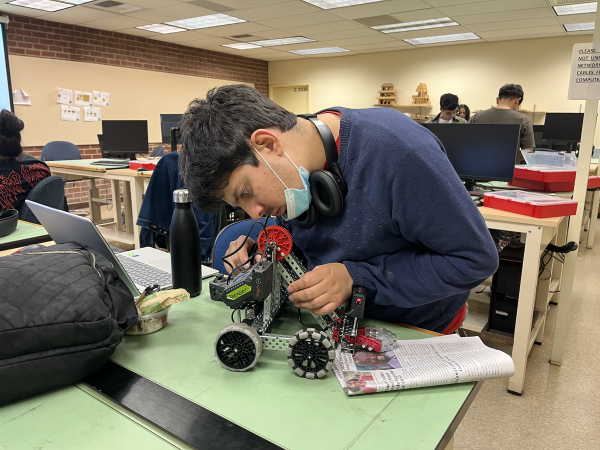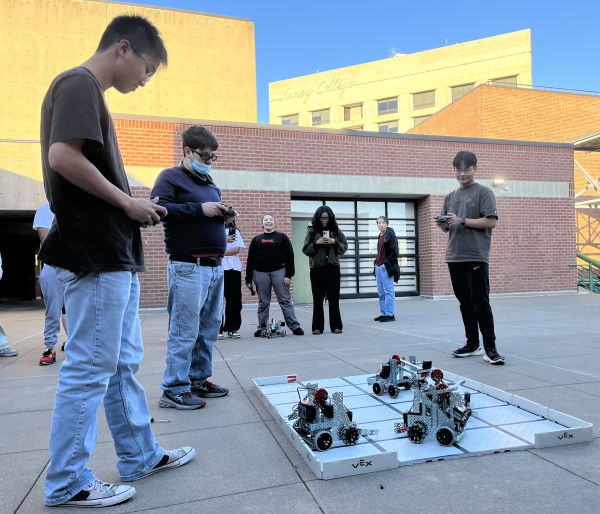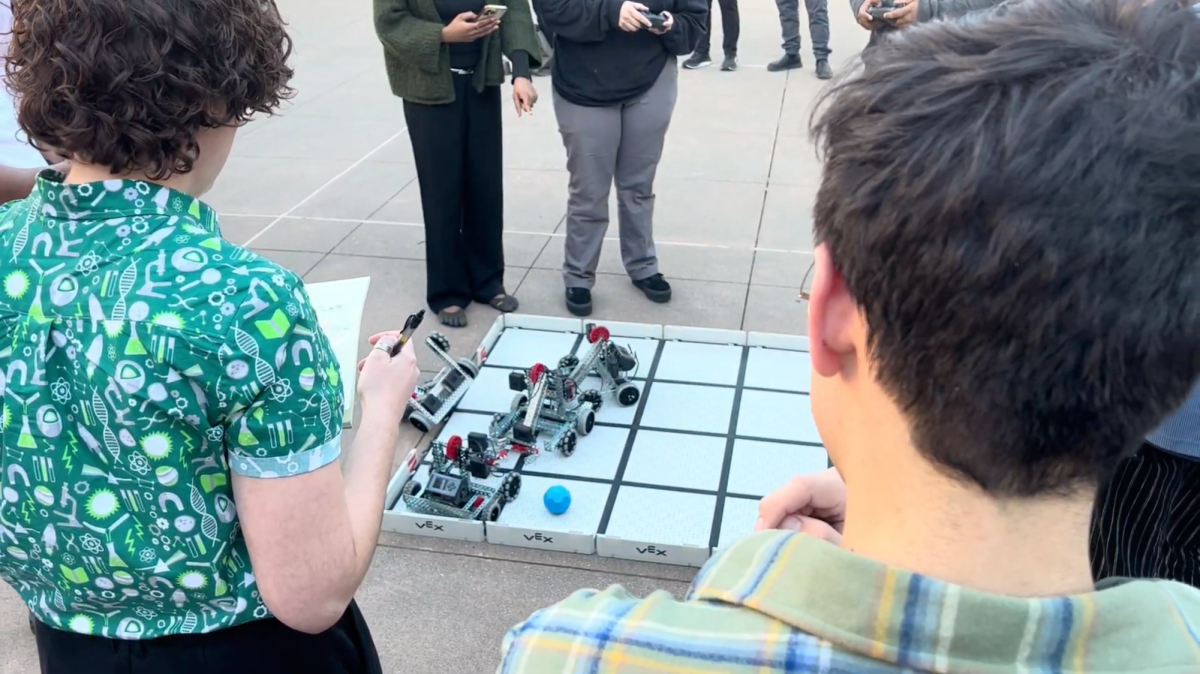Two handmade robots rushed into the center of a plastic arena, vying for control over a soccer ball. Their appendages locked in an intense clash. Behind each bot stood a student with a controller, both determined to escape the deadlock. One robot broke free, costing it control over the ball.
Time was running out and options were becoming limited. In an act of desperation, it crashed into its opponent, trying to knock it off-balance. By then, though, the match was as good as over. The winning team cheered as their robot scored a goal.
This was the sight at Laney College during the Introduction to Engineering class’ robotic soccer tournament on Nov. 6. Organized by Engineering Department Chair Mallory Barkdull, teams of up to four students competed head-to-head to build a lean, mean soccer machine.

Barkdull has done similar robotics projects in the class, with previous students having competed over who could build the best “sumo wrestling” robot using lego bricks and motors.
Second year Civil Engineering student Jamonte Wells praised the “hands-on” learning environment that Barkdull offers.
“This class is not like other classes where we just sit in the classroom listening to the teacher trying to give a lecture,” Wells said. “Everybody is always engaged.”
While a lighthearted contest appealed to many students, Barkdull designed the four week unit to focus on teaching both coding and manufacturing skills.
“People think that engineering is just math and science,” Barkdull said. “It is a lot of math and science, but it’s also the problem-solving that can be a lot of fun.”
Students built robots out of provided materials, which included metal sheets, screws, and various motor parts. They also coded the control software to drive their robots.
Starting with a base model from an online template, students were encouraged to get creative and give their design whatever competitive advantages they saw fit. Teams practiced against each other during test runs in the days leading up to the event.
Some groups optimized for speed, including as few extra parts as possible. Other groups built their robot to be large enough to be able to push other robots out of its way.
Teams also employed different strategic approaches to controlling the ball during a match. One team created an excavator-like crane on the top of their robot, while others went without grabbing mechanisms in favor of simply pushing the ball.
Students formed a total of 11 teams. The tournament kicked off with 90-second matches of two against two. A win was worth three points, a tie was worth one.

Most teams chose an aggressive playstyle, driving into opponents head-on. Pieces of material broke away as robots repeatedly smashed into one another, occasionally even tipping over. Each time this happened, students were quick to rush in and mend the damage.
Laney College President Rudy Besikof, who attended the event, compared the sight to “Formula One racing, with a bunch of pit crews trying to fix their engines.”
Once the initial rounds ended, the four top-performing teams progressed to the semi-finals, where they faced each other one-on-one.
After a fierce finale, second year Civil Engineering student Danny Nguyen claimed the victory. A large, swinging sheet of metal on the front of Nguyen’s robot may have been the key to his win. The mechanism allowed him to knock the ball – or more often, other team’s robots – sideways. This let Nguyen avoid head-on collisions, and even punish other teams for attempting them.
“More and more colleagues and students in other classes are turning up to see these events,” Besikof said. “It speaks volumes to what Professor Barkdull is doing – showing how a discipline like engineering can really go across the college.”



























